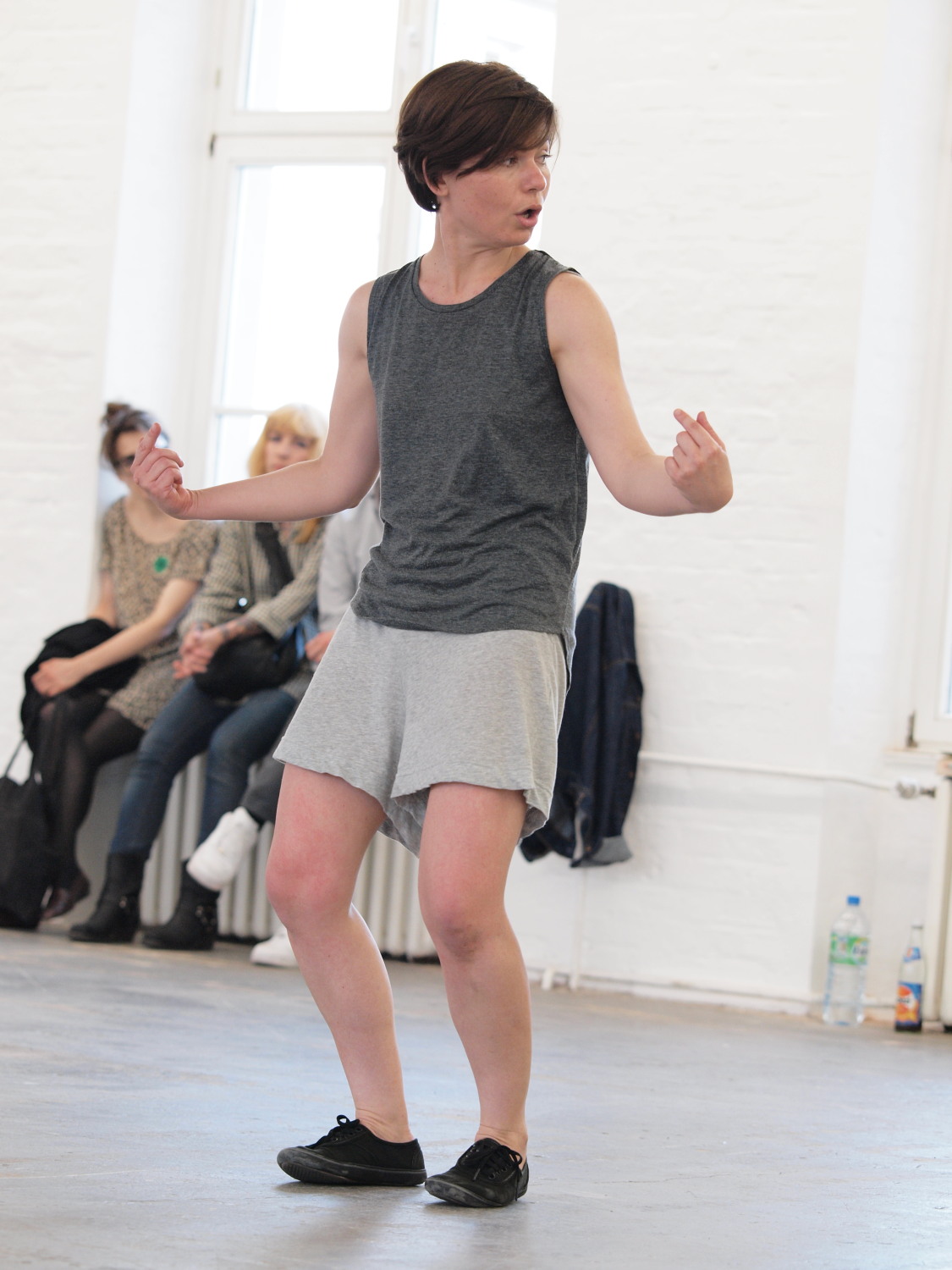On Georgia Sagri’s Antigone Model (3rd Edition)
Ongoing since 2010, July 4th, 2013, 15-21h, 3 ½ Kunstwerke, Berlin, Auguststraße 69
Georgia Sagris Antigone was a horse, a carriage-driver, a model on the cat-walk, she was sad, lame and laughing, also suffering and shaking, she became a siren, a porter, a messenger and a lover. She was beaten-down and she stood up; she died and rose again. She was also none of this at the edge of narcissism and forgetfulness. The intensity even increased during 6 hours, when sequences of every movement and image were repeated up to about 20 times. And there was no sign of fatigue. The performer’s talent for humor, show, playfulness, facial expression and body-language opened space and space of lives and fates.
A re-recording of the chorus of the ancient drama
Sagri sequenced the piece by returning to her electronic device to record her voice, clapping and stepping. Then she started again using dance, show, play and facial expression. And she found ways to bind together all aspects of her research on Antigone by her space-filling voice and sounds. She laughed, groaned, whinnied, cried and accompanied herself by the rhythm of her steps, clapping her hands on her body and moving the black-varnished iron elements of the installation, which she carried, to control the extension of the space in the space. Realizing the story of Antigone the threefold elements might also have personified Polyneikes and the members of Kreon’s family. However Sagri personified the dead in her performance in a way that the objects and she herself expressed a general idea of death – and life.

Georgia Sagri: Antigone Model,photograph: Johnicon; courtesy of the artist, Lars Friedrich and Melas Papadopoulos
The sounds amplified the physical expressions. Extended by recorded passages of former sequences of the performance on a laptop, to which she returned frequently, single episodes became separated. As recorded and live sounds were often hard to distinguish actually past moments returned by the feedback she used. This dialogue between past and presence served as an entire element of the whole performance and connected the live event to the underworld. Thus the essence of Antigone’s motive to bury Polyneikes was actualized. Sagri’s minimal use of electronic equipment also simulated the chorus of the ancient drama in the sense that it became the accumulated choir of the dead. This created the impression of a meta-communication between the actual performance and the moments which have gone.
